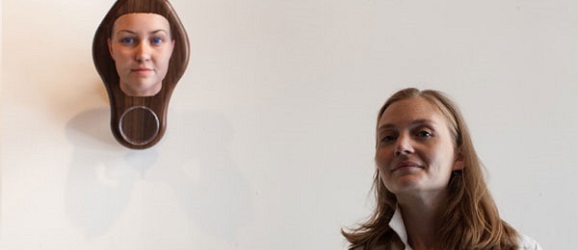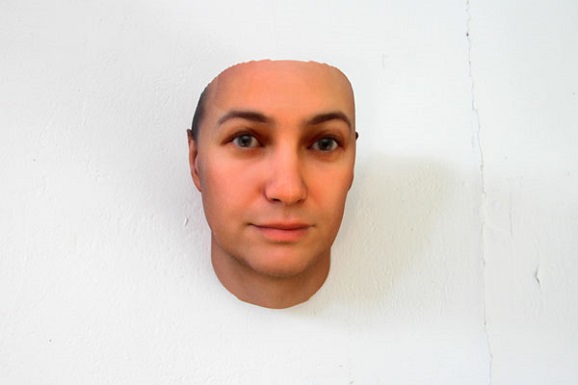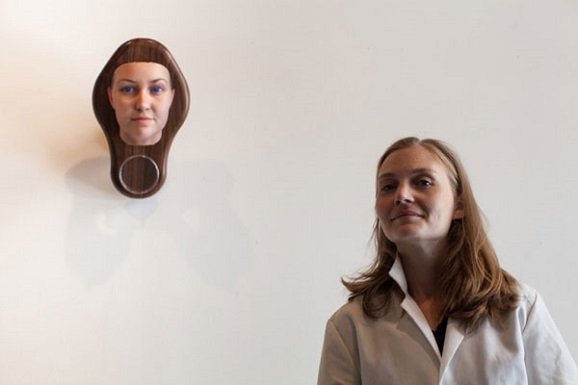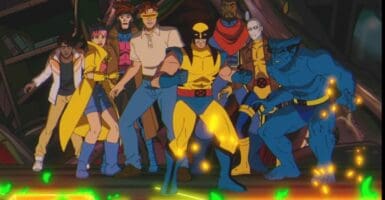Artist Turns Used Gum And Hair Into DNA-Derived Portraits.
This article is more than 2 years old
 The last time I tried to combine science with art, it included making a museum experience a chemical change. The police called it arson, so it’s possible I’m writing this from a small prison cell. But let’s all keep a smile on, shall we, for perhaps one day these cell walls can bear the art of Heather Dewey-Hagborg and her “Stranger Visions” exhibit. Also, I’m not in prison.
The last time I tried to combine science with art, it included making a museum experience a chemical change. The police called it arson, so it’s possible I’m writing this from a small prison cell. But let’s all keep a smile on, shall we, for perhaps one day these cell walls can bear the art of Heather Dewey-Hagborg and her “Stranger Visions” exhibit. Also, I’m not in prison.
Hagborg is a PhD student at New York’s Rensselaer Polytechnic Institute, studying electronic arts. After taking a crash course in molecular biology at a DIY biology lab called Genspace, “Stranger Visions” began to take shape. Her process involves going out into the street and collecting samples that will provide ample DNA samples, such as chewing gum, hair, or cigarette butts. In other words, she picks up people’s trash — but for research. And she says, New York being what it is, she doesn’t even get weird looks anymore.
She takes a small piece of the sample and puts it through the centrifuge process to extract the purified DNA, before running a polymerase chain reaction on it. The mitochondrial DNA is sent off to a lab to be sequenced, and the results of each give Dewey-Hamborg insight on the person’s gender, ancestry, eye color, possibility of obesity, and around 40 more details specific to facial features. She then enters it into a computer program that designs a 3D representation of what that person could possibly look like, generally around the age of 25. She then goes to New York University, where that image can become a reality using their 3D printer, and out comes one of the most interesting groups of sculptures to ever exist. Below is the cigarette butt sample she used to make the face pictured beneath it.


She doesn’t work with used condoms or saliva samples, in case you were hung up on that. Although a used condom would probably give a more accurate representation of what the person would look like. All of her works are, of course, not 100% accurate, but that’s not important. What’s important is the boundary being crossed here — the one where people can just pick up icky things off the ground and use them for good.
“It came from this place of noticing that we are leaving genetic material everywhere,” said Dewey-Hagborg. “That, combined with the increasing accessibility to molecular biology and these techniques means that this kind of science fiction future is here now. It is available to us today. The question really is what are we going to do with that?”
Seen above, this is the bigger picture of Dewey-Hagborg and her own DNA portrait.













